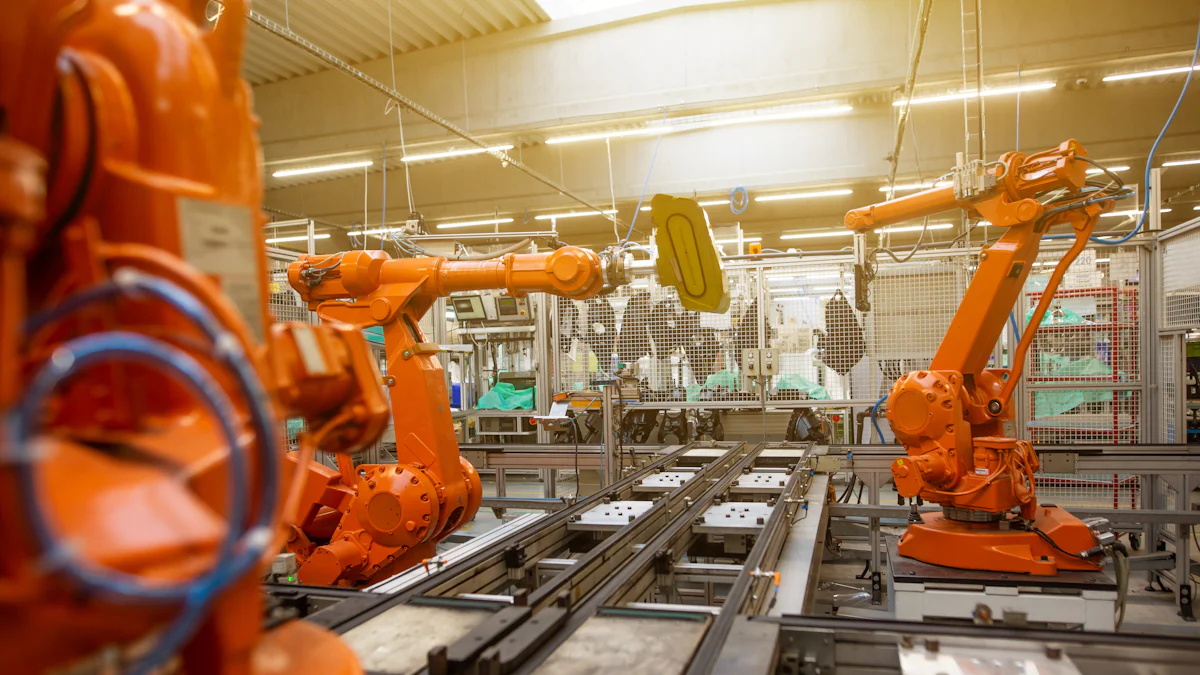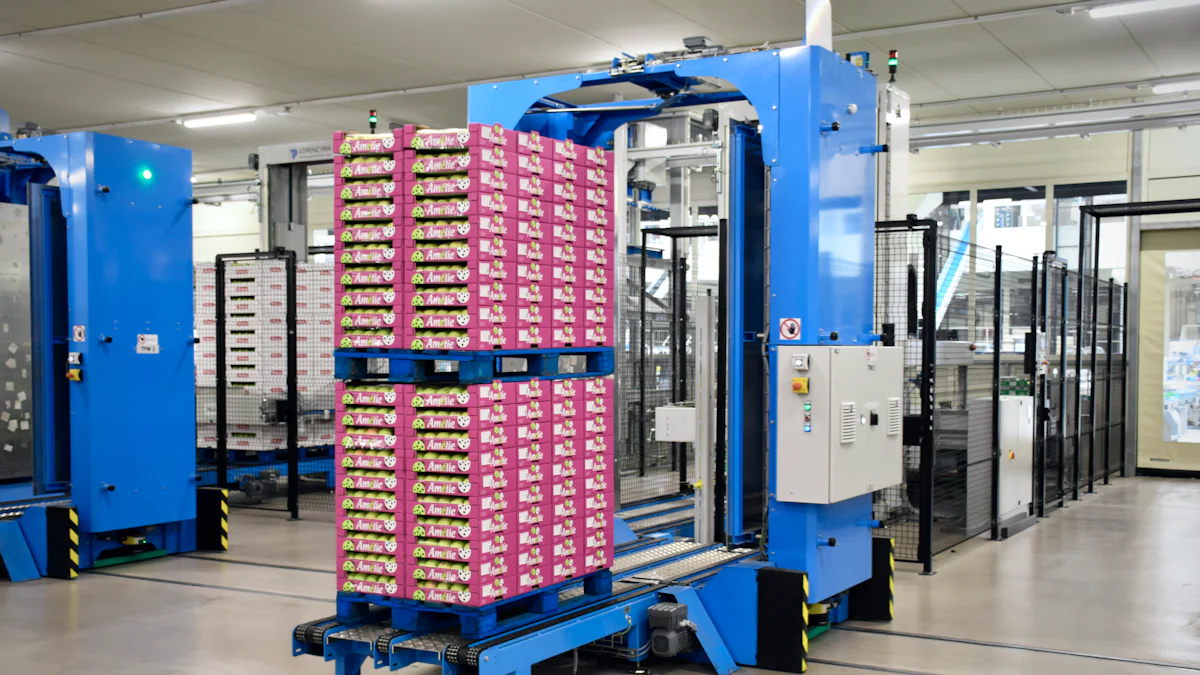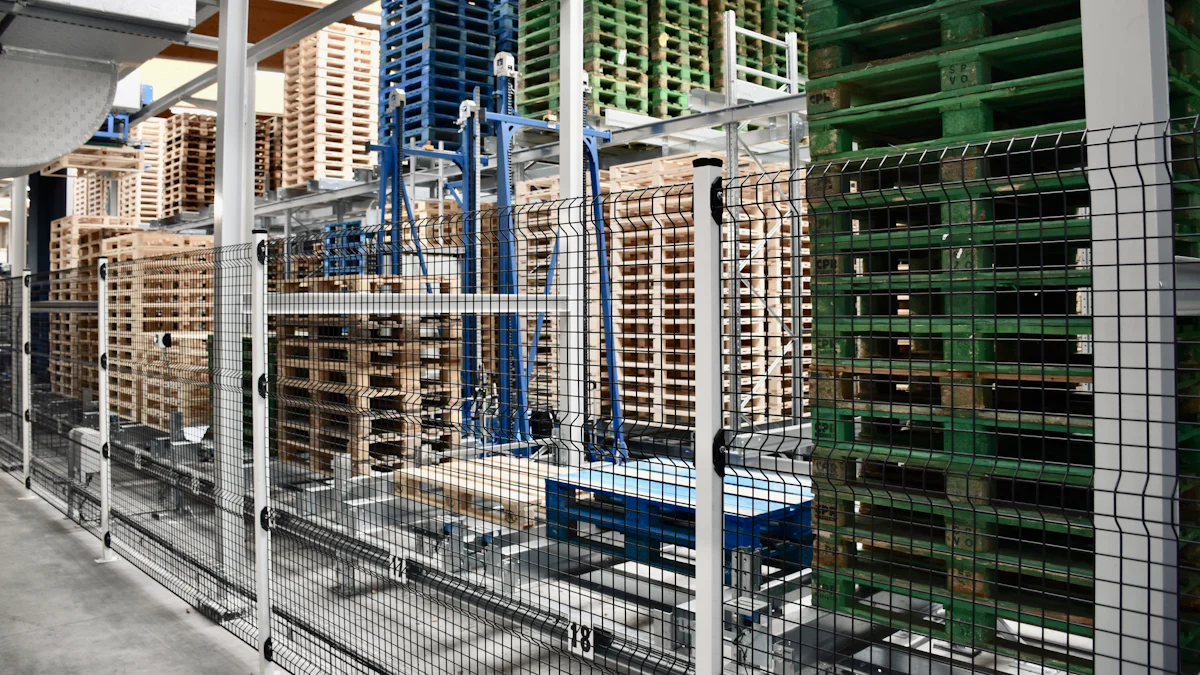2024 Trends: Warehouses Embrace Automation

Automation in warehouses revolutionizes how you manage logistics. It enhances efficiency and reduces costs. As the warehouse automation market is projected to grow from $25 billion in 2024 to over $54 billion by 2029, staying updated with industry trends becomes crucial. You must embrace these advancements to remain competitive. In 2024, the focus shifts to cutting-edge technologies that redefine operations. Turn To Automation to streamline processes and meet the demands of a rapidly evolving market. This shift not only boosts productivity but also positions you at the forefront of innovation.
The Rise of Automation in Warehousing

Historical Context
Evolution of warehouse operations
You have witnessed a remarkable evolution of warehouse operations over the years. Initially, warehouses relied heavily on manual labor for tasks such as sorting, packing, and inventory management. This approach often led to inefficiencies and errors. However, the landscape began to change with the introduction of mechanized systems. Forklifts and conveyor belts became commonplace, streamlining the movement of goods within warehouses.
The evolution continued as technology advanced. The shift from traditional bulk transactions to automation marked a significant transformation in how warehouses are managed and run. Automated systems started to take over repetitive tasks, achieving quicker turnaround times and a more streamlined workflow. This evolution not only enhanced efficiency but also paved the way for the integration of more sophisticated technologies.
Early adoption of automation technologies
The early adoption of automation technologies set the stage for the modern warehouse. Industries like Toyota and Nissan led the charge by implementing automated systems in their operations. This move sparked a sudden expansion of industries embracing automation. The benefits were clear: reduced labor costs, minimized errors, and increased productivity.
As more industries outside of manufacturing began to adopt automated warehouses, the scope of the market expanded further. Businesses recognized the potential of automation to streamline workflows and enhance efficiency. This early adoption phase laid the foundation for the widespread use of automation technologies in today's warehouses.
Current State of Automation
Popular automated systems in use
Today, you find a wide array of automated systems in use across warehouses. These systems include automated guided vehicles (AGVs), robotic arms, and automated storage and retrieval systems (AS/RS). Each of these technologies plays a crucial role in streamlining the entire process of receiving, storing, and distributing goods.
AGVs, for instance, navigate through warehouses autonomously, transporting goods from one location to another. Robotic arms handle tasks such as picking and packing with precision and speed. AS/RS systems optimize storage space and ensure quick retrieval of items. These technologies work in tandem to create a seamless and efficient warehouse environment.
Industry leaders in automation
Several companies have emerged as industry leaders in warehouse automation. They offer innovative solutions that propel businesses towards success in today's competitive marketplace. Companies like Amazon Robotics and Kiva Systems have revolutionized the way warehouses operate by integrating cutting-edge technologies.
These industry leaders continuously push the boundaries of what automation can achieve. Their solutions not only enhance efficiency and productivity but also position businesses at the forefront of innovation. As a result, warehouse automation has swiftly evolved from an option to a vital necessity for maintaining competitiveness in the market.
Key Trends in 2024
Advanced Robotics
Role of AI and machine learning
In 2024, advanced robotics will redefine warehouse operations. You will see AI and machine learning playing pivotal roles in enhancing the capabilities of automated systems. These technologies enable robots to learn from data, adapt to new tasks, and optimize processes. AI can forecast demand by analyzing historical data and complex patterns, providing real-time insights into demand fluctuations. This predictive modeling allows you to manage inventory more effectively and respond swiftly to market changes.
Impact on labor and efficiency
The integration of AI and robotics significantly impacts labor and efficiency. You will notice a shift in workforce dynamics as robots take over repetitive and labor-intensive tasks. This transition allows human workers to focus on more complex and strategic roles. The increased use of robotics drives tremendous efficiency within warehouses, reducing operational costs and minimizing errors. By automating routine tasks, you can achieve faster processing times and enhance overall productivity.
Internet of Things (IoT)
Real-time tracking and monitoring
The Internet of Things (IoT) revolutionizes how you track and monitor warehouse operations. IoT connects devices and equipment, enabling real-time data collection and monitoring. This connectivity allows you to track inventory levels, equipment performance, and environmental conditions. With IoT, you gain valuable insights into your operations, facilitating informed decision-making and improving efficiency.
Integration with existing systems
Integrating IoT with existing systems enhances warehouse operations. You can seamlessly connect IoT devices with your current infrastructure, creating a more interconnected and responsive environment. This integration optimizes logistics, inventory management, and storage solutions. By leveraging IoT technology, you can streamline processes, reduce downtime, and improve overall operational efficiency.
Autonomous Vehicles
Use in material handling
Autonomous vehicles transform material handling in warehouses. These vehicles navigate through warehouse environments autonomously, transporting goods efficiently and safely. You can rely on autonomous vehicles to handle tasks such as loading, unloading, and transporting materials. This technology reduces the need for manual intervention, increasing speed and accuracy in material handling operations.
Safety and regulatory considerations
Safety and regulatory considerations play crucial roles in the adoption of autonomous vehicles. You must ensure that these vehicles operate safely within warehouse environments. Implementing proper safeguards and adhering to regulatory standards is essential. By prioritizing safety, you can mitigate risks and ensure the successful integration of autonomous vehicles into your operations.
Turn To Automation: Benefits of Embracing Automation

Increased Efficiency
Reduction in operational costs
When you turn to automation, you significantly reduce operational costs. Automated systems streamline processes, cutting down on the need for manual labor. This reduction can lead to a decrease in labor costs by up to 60%. By automating repetitive tasks, you minimize the resources required for operations, which directly impacts your bottom line. The initial investment in automation technology pays off as you experience lower ongoing expenses.
Faster processing times
Automation accelerates processing times within your warehouse. Tasks like picking, packing, and shipping become faster and more efficient. Automated systems handle these operations with precision, reducing the time it takes to fulfill orders. This speed not only enhances productivity but also improves customer satisfaction. You meet delivery deadlines more consistently, which strengthens your reputation in the market.
Improved Accuracy
Minimization of human error
Human error often leads to costly mistakes in warehouse operations. By turning to automation, you drastically minimize these errors. Automated systems perform tasks with high precision, ensuring accuracy in every step. This reduction in errors can reach up to 99%, which translates to fewer returns and increased customer trust. You maintain a higher standard of service by relying on technology to handle intricate processes.
Enhanced inventory management
Automation enhances your inventory management capabilities. With automated systems, you gain real-time insights into inventory levels and movements. This visibility allows you to optimize stock levels, reducing overstock and stockouts. You make informed decisions based on accurate data, which improves overall efficiency. Enhanced inventory management leads to better resource allocation and a more streamlined supply chain.
Challenges and Considerations
Initial Investment Costs
Budgeting for new technologies
When you consider automation, budgeting becomes a critical step. New technologies require significant upfront investment. You need to allocate resources wisely to ensure a smooth transition. Start by evaluating your current financial standing. Determine how much you can invest without straining your budget. Prioritize technologies that offer the most value for your operations. This strategic approach helps you manage costs effectively.
Return on investment analysis
Analyzing the return on investment (ROI) is essential. You want to ensure that the benefits outweigh the costs. Calculate potential savings from reduced labor expenses and increased efficiency. Compare these savings against the initial investment. A positive ROI indicates a worthwhile investment. This analysis provides a clear picture of the financial impact of automation. It guides your decision-making process, ensuring you make informed choices.
Workforce Implications
Automation changes the workforce landscape. You must focus on retraining and upskilling your employees. Equip them with the skills needed to work alongside automated systems. Training programs enhance their capabilities, making them valuable assets. This investment in your workforce fosters a culture of continuous learning. It prepares your team for the evolving demands of the industry.
Automation changes the workforce landscape. You must focus on retraining and upskilling your employees. Equip them with the skills needed to work alongside automated systems. Training programs enhance their capabilities, making them valuable assets. This investment in your workforce fosters a culture of continuous learning. It prepares your team for the evolving demands of the industry.
Survey Results: A survey revealed that 89% of full-time workers feel more satisfied with their jobs due to automation. They appreciate the opportunity to learn new skills and advance their careers.
Potential job displacement
Automation may lead to job displacement. You need to address this challenge proactively. Identify roles that automation might affect. Develop strategies to transition affected employees into new positions. Offer support through career counseling and job placement services. This approach minimizes the negative impact on your workforce. It demonstrates your commitment to their well-being and professional growth.
Survey Results: According to the survey, 91% of respondents believe automation saves them time and improves work-life balance. This positive outlook highlights the potential benefits of embracing automation in the workplace.
Automation in warehouses is not just a trend; it's a necessity. By embracing automation, you enhance efficiency, accuracy, and scalability. This shift allows you to stay competitive in a rapidly evolving market. You can reduce reliance on manual labor and focus on higher-value tasks that drive growth and innovation. As you adapt to these trends, you position yourself at the forefront of the industry. The future of warehousing promises exciting advancements. By staying informed and proactive, you ensure long-term success and profitability.
See Also
Automated Future: Benefits of High-Tech Manufacturing Warehouses
Necessity of Warehouse Automation for Business Success
Exploring Robotic Automation for Enhanced Warehouse Efficiency
Enhanced Warehouse Productivity with Logistics Robotics Power
Insights into AI Integration for Future Supply Chain Optimization
